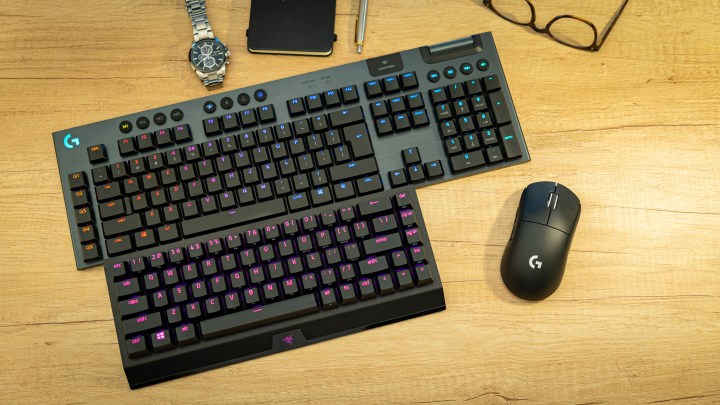I’ve always been a full-keyboard kind of guy. Not to the point of using macros, but I’ve been religious about the full 104-key layout with a numpad, in hindsight, out of a purist’s mentality. But I’ve now been reviewing keyboards for the better part of a year, and I’m starting to doubt my faith.
You see, I — and most other people, I suspect — don’t use most of the keys on my plank. When it comes to the numpad, Num Lock goes unused, and the rest of the keys are found elsewhere, too. Of the F-row, I use F4 to close programs, and once in a while F5 for quick-saving in games while the rest, again, goes unused. And that island between the numpad and the main keys, I only use Delete – no other of the nine keys there. OK, maybe Print Screen from time to time, but it’s rare and I’ve mostly switched to the much-easier snipping tool.
I’ve long been married to the full keyboard, but now I’m contemplating divorce, and there’s a simple reason why: 65% keyboards. It’s what has made me think that the best gaming keyboard has yet to have been made.
The joys and pains of choosing a keyboard
Of course, there is really only one 65% keyboard out there, at least that I’ve used. That’s the Razer BlackWidow V3 Mini.
But it’s not that keyboard in particular that I’m in love with. It’s a great plank, but Razer isn’t really my style, and I still have one major gripe with it for office use: It sits too tall for extended typing sessions. What I really like about it is its 65% layout. It has all the main typing keys, arrow keys, and a delete. Everything I need in daily life, and nothing more. I still miss the dedicated media keys and volume roller sometimes, but the appeal of the 65% layout is winning me over.
But the layout is new, and still uncommon in the gaming space. So, what about 60% as an alternative?
Well, it around this time last year I got hands-on time with Razer’s Huntsman Mini, and later with Corsair’s inconveniently named K65 RGB Mini. Both are excellent 60% keyboards, and using them in-game was a joy – they were small, and gave me more space to mouse around.
They were so good for gaming, in fact, that it made a serious difference to my performance in Insurgency Sandstorm. To this day, I still grab one of these smaller keyboards every time I fire up the game.
Switching keyboards all the time is a hassle.
The problem? I’m also a professional typist, and switching keyboards all the time became a hassle. Once I started using 60% keyboards, I was forced to switch keyboards every time I went from work to gaming. That’s what truly shines about Razer’s 65% keyboard. When it came through my office, I suddenly found myself switching a lot less, thanks to the inclusion of the dedicated arrow and delete keys.
In the end, I still do switch, but it’s not because of the layout – but rather because I’ve used a Logitech G915 plank as my primary keyboard for the last two years. I’m in love with the comfort of a low-profile mechanical keyboard and no full-height board will do anymore – my wrists kill me if I use a normal-height keyboard all day long. That’s why it’s about time companies like Logitech give us what we all want — the ultimate 65% keyboard.
Dear Logitech: Give me a G915 65%

Here’s the keyboard I want: a low-profile, mechanical, 65% wireless keyboard, but with dedicated media keys and a volume roller. Basically, a G915 65%. And I’ll pay for it, gladly. In fact, I think a keyboard like that could be priced at about $190 tp $210 and still sell like hotcakes. I’d personally even (begrudgingly) accept a $250 price point, just because there’s no keyboard like that out there.
Those arrow keys and delete key are essential, and they make the 65% layout so much better than 60%.
It will finally be a keyboard that can fulfill both gaming and office tasks, mostly without sacrifice. The endgame keyboard. Those arrow keys and delete key are essential, and they make the 65% layout so much better than 60%. It will finally be the one keyboard that can replace two.
But Corsair, you’re not out of the woods either just because you don’t make wireless keyboards. What’s up with that? (OK, I know about the K63, but it’s old and one is not enough)
For now, I’m not divorcing my trusty G915 yet. I can’t justify switching it out for a G915 TKL with the associated costs, but I am waiting. Here’s to hoping it won’t be long until Logitech and other keyboard companies hear my plea.




